
The first USS Astoria (SP-2005/AK-8) was a steel-hulled, coal-burning steam cargo ship of the United States Navy.

The first USS Abarenda (AC-13/AG-14) was a collier in the service of the United States Navy during World War I.

USS Camden (AS-6) was the first ship of the United States Navy to bear the name Camden, after Camden, New Jersey the city that lies on the Delaware River across from Philadelphia, Pennsylvania.
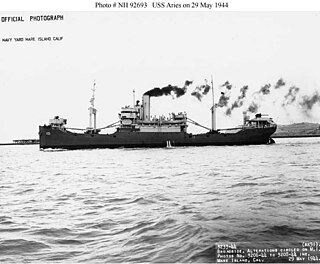
USS Aries (AK-51) (1918–1952) was a United States Navy cargo ship built as Lake Geneva under a United States Shipping Board (USSB) contract in 1918 at Duluth, Minnesota, by the McDougall Duluth Shipbuilding Company, to augment American logistics capability during World War I. The freighter was delivered to the Navy at Montreal, Quebec, Canada, on 21 September 1918 and was placed in commission the following day for service in the Naval Overseas Transportation Service. Aries was named for the constellation.

USS Cetus (AK-77) was a Crater-class cargo ship in the service of the US Navy in World War II. Named after the equatorial constellation Cetus, it was the only ship of the Navy to bear this name.

USS Ajax (AC-14/AG-15) was a collier in the United States Navy. Originally she retained her previous name of Scindia, and was renamed for the mythical Ajax in 1901. In 1921, she became a receiving ship and was redesignated AC-14. She was reclassified as a seaplane tender and given the hull designator AG-15 in 1924.

USS Salem (CM-11) was a commercial cargo ship, that served as a minelayer and then net laying ship of the United States Navy during World War II.

USS Glacier (AF-4) was a Glacier-class stores ship acquired by the U.S. Navy for use in the Spanish–American War. She served again during World War I in the dangerous North Atlantic Ocean, delivering general goods and ammunition to American Expeditionary Force troops in Europe.

USS Houston (AK-1) was a cargo ship that was acquired by the U.S. Navy for service in World War I. During World War II, she served as a commercial cargo ship under charter to the United States Lines by the War Shipping Administration.
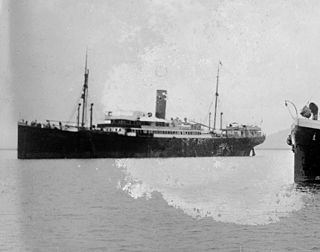
USS Newport News (AK-3) was a cargo ship acquired by the U.S. Navy for service in World War I.
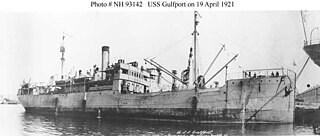
USS Gulfport (AK-5) was a cargo ship acquired by the U.S. Navy for service in World War I.

USS Quincy (AK-10) was a cargo ship acquired by the U.S. Navy for service in World War I.
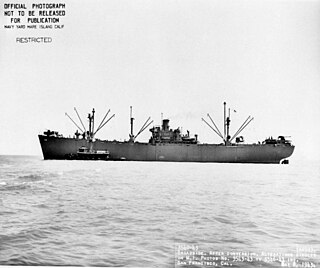
USS Eridanus (AK-92) was a Crater-class cargo ship commissioned by the US Navy for service in World War II and manned by a US Coast Guard crew. She was named after the constellation Eridanus. She was responsible for delivering goods and equipment to locations in the war zone.

USS Allegan (AK-225) was a Crater-class cargo ship commissioned by the U.S. Navy for service in World War II. She was responsible for delivering troops, goods and equipment to locations in the war zone.
USS Blount (AK-163) was an Alamosa-class cargo ship commissioned by the U.S. Navy for service in World War II. She was responsible for delivering troops, goods and equipment to locations in the war zone.
USS Hidalgo (AK-189) was an Alamosa-class cargo ship that was constructed for the U.S. Navy during the closing period of World War II. She was declared excess-to-needs and returned to the U.S. Maritime Commission.

USNS Sgt. Jack J. Pendleton was a Lt. James E. Robinson-class cargo ship constructed during World War II as a Victory ship and named the SS Mandan Victory. The Mandan Victory was placed into service by the War Shipping Administration's Emergency Shipbuilding program under cognizance of the U.S. Maritime Commission.

USS Carolinian (ID-1445) was a cargo ship that served in the United States Navy from 1918 to 1919.
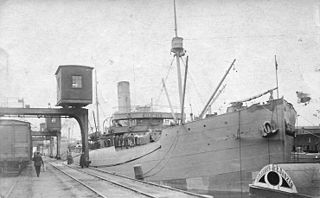
USS Kerowlee was a United States Navy cargo ship in commission from 1918 to 1919.

USS Marcellus was an iron schooner-rigged collier United States Navy Auxiliary ship in service with the United States Navy from 1898 to 1910. She participated in the U.S. Navy's first efforts in coaling warships while underway at sea. She was rammed by a commercial steamer in the early morning hours of 9 August 1910 and sank that afternoon without loss of life.


















